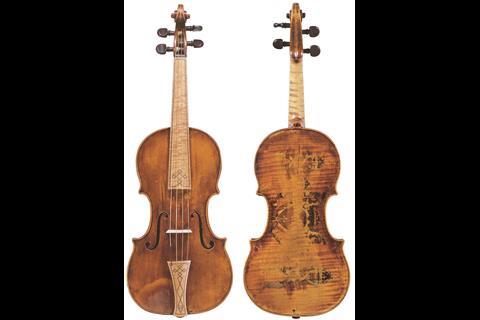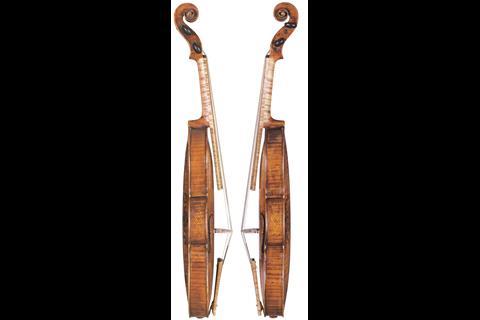Based in Cremona, the Friends of Stradivari network brings together instruments owned by collectors and stringed-instrument enthusiasts from around the world. The Strad Calendar 2018 celebrates twelve of these treasures, with this violin from a private collection in Germany featuring in October. Text by John Dilworth
The Strad Calendar 2018 is now on sale at
www.thestradshop.com
This violin is sadly only a fragment of the original, albeit a profoundly important part of the history of the violin. The back and sides bear the clear heraldic decorations of Charles IX of France, consistent with the other authenticated examples by Amati belonging to the Ashmolean and Tullie House museums in England, the National Music Museum in the USA, and the Cremona Museo del Violino. It was evidently part of the set of violins commissioned from Andrea Amati for the French King, and is thus one of the earliest surviving Cremonese violins. Andrea, born in about 1505, is the first identifiable maker of violins, if not strictly speaking the ‘inventor’, most certainly the man who formalised the design of the then new four-stringed soprano instrument, and passed this great legacy on not only to three further generations of his own family, but to Cremona, Italy and thus to the world. The workmanship, materials, geometry and techniques clearly identifiable in these surviving instruments have remained the standard practice of luthiers ever since.
The precise form of the decoration of these Charles IX instruments does vary within the instruments of the set, but the motto ‘Pietate et Justitia’ is legible, as are the fleur-de-lys motifs which are common to all. It is thought that the set was once housed in the Palace of Versailles in Paris, and dispersed either before or during the French Revolution. This violin was discovered at Christie’s auction house in London in 1986.
Photos by Claudio Mazzolari, courtesy Fondazione Antonio Stradivari Museo del Violino, Cremona












































No comments yet